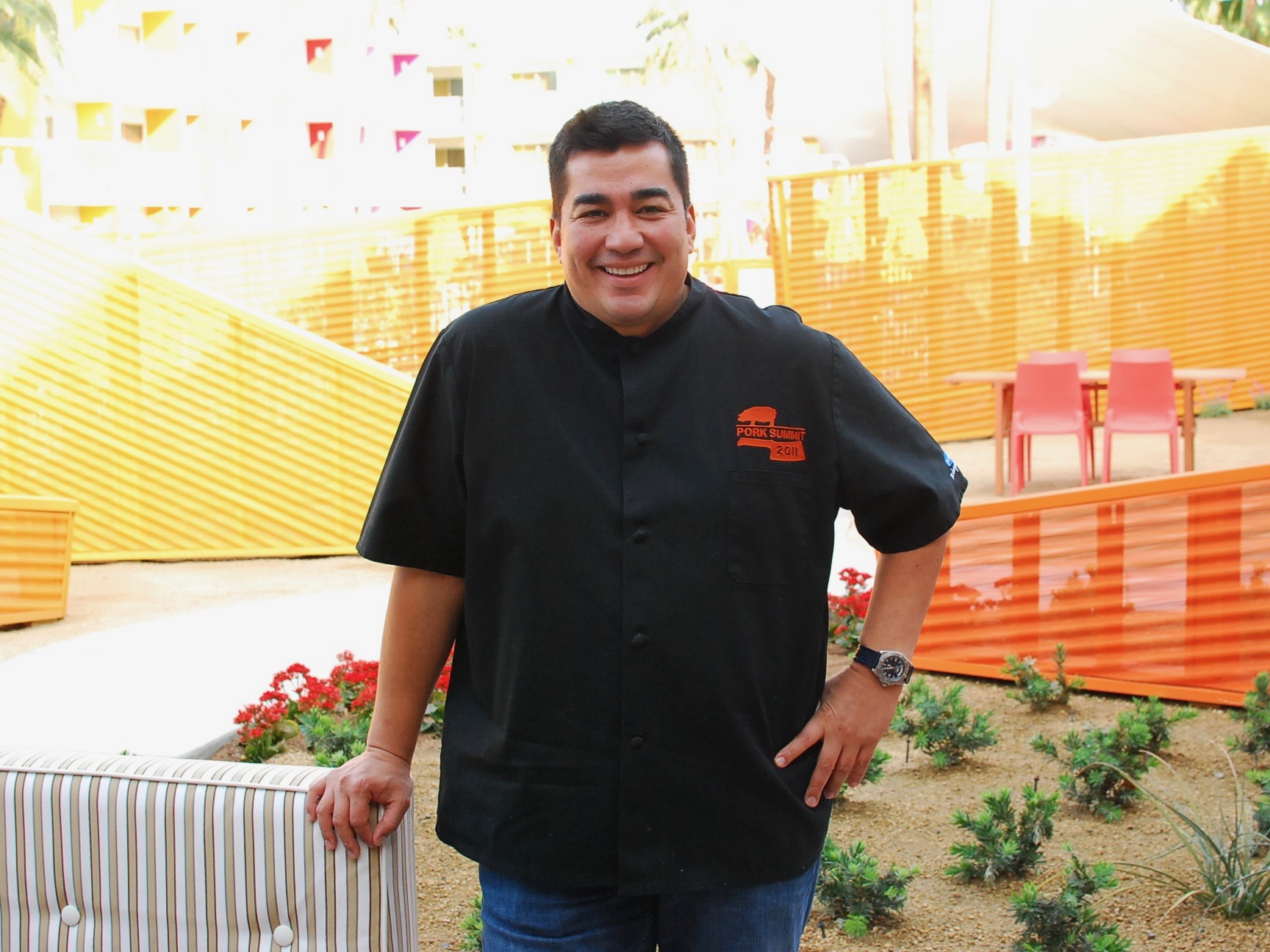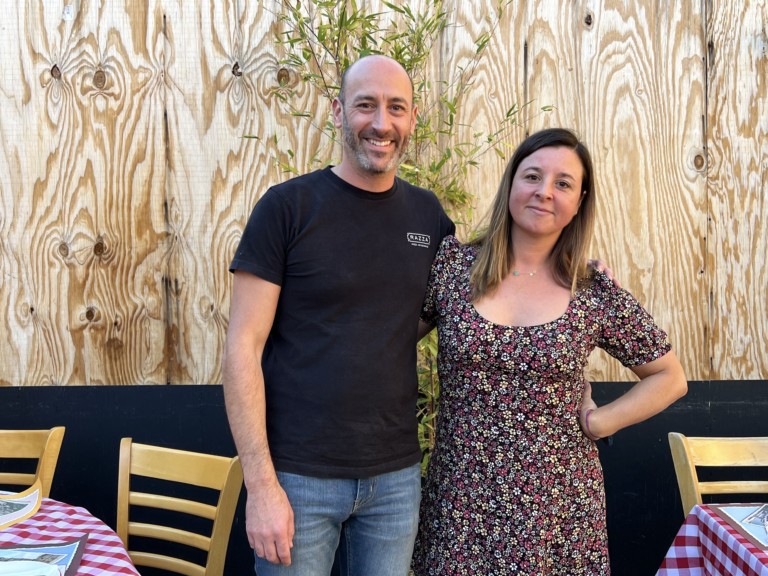Jose Garces grew up in Northwest Chicago and hitched his culinary wagon to mentor Douglas Rodriguez, who took him down I-95 from Manhattan to Philadelphia. Alma de Cuba brought Garces to Philly, and restaurateur Stephen Starr kept him there. They teamed on a restaurant called El Vez before Garces took his skills solo in 2005, with a Spanish restaurant called Amada. His empire spread from Philly to Chicago, Scottsdale, and Palm Springs, and he won The Next Iron Chef. His latest contributions to the culinary landscape are a Basque-inspired tapas restaurant, Tinto, and a tequila-soaked Mexican cantina, El Jefe. On February 18, we met at The Saguaro Palm Springs. Garces showed up wearing a Pork Summit 2011 chef’s coat, and he shared culinary insights.
Tell me about the Pork Summit.
Most of my menus are pork-centric. I have a farm out in Bucks County. I don’t know if you’re familiar with Philly or New York, but Bucks County is an hour north of Philadelphia and an hour south of New York. We started growing our own veg, produce, microgreens. We’ve got some chickens going, and pork is on the radar to bring on to the farm.
Oh yeah? What breeds?
Maybe Berkshire, maybe Duroc. I’m not sure. We do a lot of suckling pigs at Amada, my other Spanish restaurant. We have this thing, you order suckling pig in advance, we go to the market, pick it up for you, and when you come in, you have this roast suckling pig dinner. I’m trying to research which breed would be best to have that program.
So you grew up in Chicago?
I grew up in Chicago on the Northwest side, Irving Park & Central. Have you been to Chicago?
It’s been eight or nine years since I’ve been there. That’s like two generations in terms of restaurants.
Yeah, Chicago’s a great food town. I have a restaurant there too called Mercat, and it’s more inspired by Catalonia and that region of Spain.
What’s the biggest challenge about maintaining quality at all the different cities and restaurants?
This is a challenge, coming out here and being so far removed, but I have the chef who opened this restaurant with me, from Philly. His name is Dave Conn. He’s a fantastic chef. He’s here and I trust him. He’s worked with me for six years. He’s done all my openings with me, so when you get so far, it’s really about the people. We started here with our base Tinto menu, and I expect it will evolve a lot over the next year or two, based on where we are, based on the ingredients we can get, so I’m excited about that. Keeping up the quality and standards that I expect in a restaurant, that’s the biggest challenge when you’re so far from home.
What’s the criteria for a dish that would go on the menu at Tinto?
Whatever dish that goes on has to be better than the existing dish it’s replacing. If a chef can put something in front of me that’s better than what I’ve created, then they can have it on the menu.
Is that true of El Jefe as well?
That’s true of El Jefe as well.
[Tinto Burger arrives]
What’s the key to a great hamburger?
The key to a great hamburger is the grind. We do a special grind for our burger. It’s sirloin, chuck, and we have Kobe beef fat we put in it as well, so a good amount of fat is also a key. The grind, we take this mix of cuts, and we’ll extrude them through a grinder, and kind of follow them like spaghetti strings. Then we roll it, torchon-style, so you have this torpedo. I tell my cooks not to use their hands. That starts to break down the meat, and that’s where you get that discoloration. Then what we’ll do is just cut a patty straight down. So you’ll have these strands that are packed tight together, but not hand packed, and then when you griddle it – and I griddle all my burgers on the flat top – you get a nice crust and you get the sensation where it’s melt in your mouth. That’s the key to my burger.
Was it a given that you’d become a chef, or did you consider other careers?
No, I don’t think it was a given. I think what it was for me, I went to two years of college and didn’t find something that I found passion for, or I thought, “Oh, this sounds great.” I think I was going for a Business Administration degree. It just wasn’t doing anything for me, so I decided to explore culinary school, because I knew that was something I was passionate about. As soon as I got there – I went to school in Chicago at a culinary school called Kendall College – instantly, I knew. There were just so many opportunities, so many options. There was catering, hotel chef, restaurant chef. I just felt like I could do all of these things. That was my introduction to the culinary world. I had worked in some Italian restaurants, some quick service restaurants in my teens, but I never really took it that seriously until I got to school.
What was your very first night like in a professional restaurant kitchen, and where was that at?
My first night was in this restaurant called the Signature Room in Chicago. It was on the 95th floor of the John Hancock building. First of all, just to be cooking on the 95th floor of any building – it had floor to ceiling windows where you could see down on the lakefront. I felt like I was on top of the world.
Even in the kitchen you had that?
Even in the kitchen, absolutely. But it was kind of a rude awakening, because there was a lot of pressure. There were a lot of intense people cooking there. It was a busy restaurant. So I found it really intimidating, actually, but fun, exciting, at the same time.
What are some of the hallmarks of your style as a chef?









Blog Comments
jose jimenez martinez
March 12, 2012 at 3:09 PM
hello chef